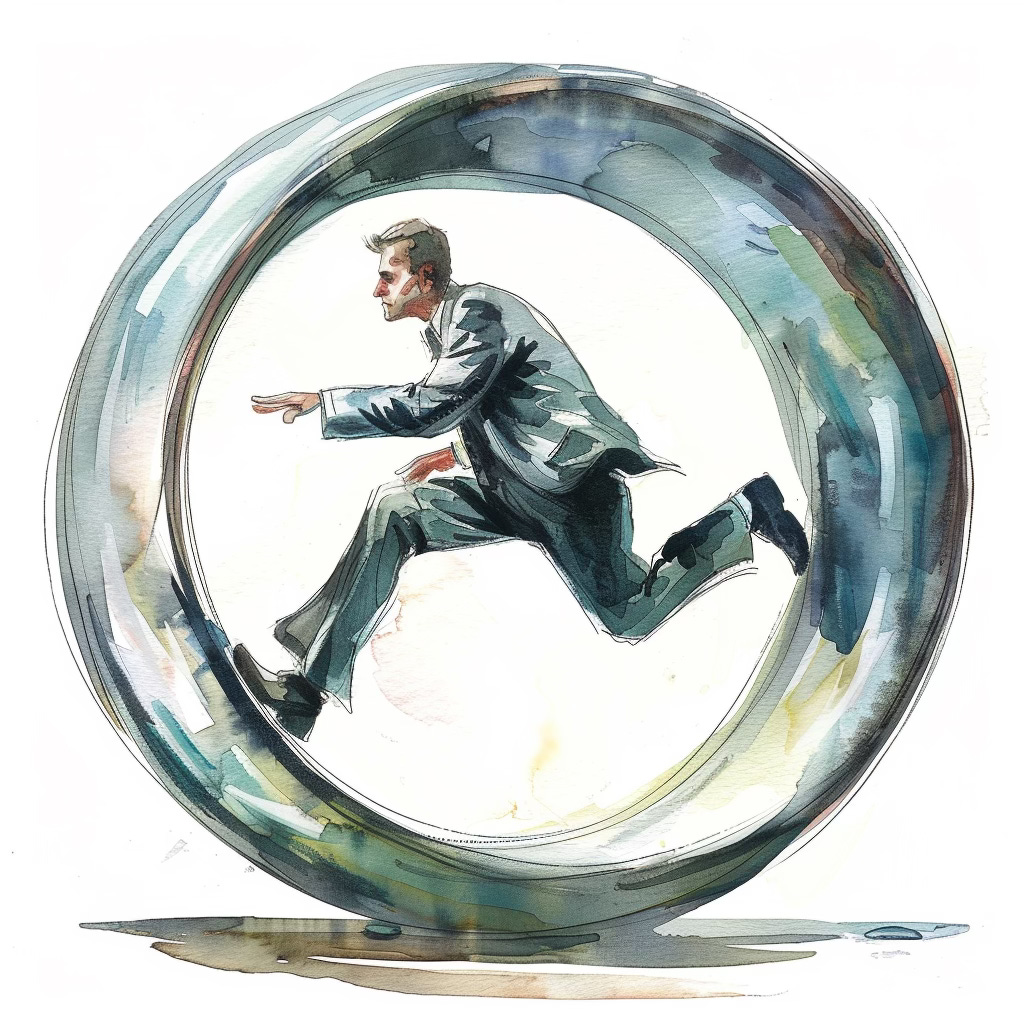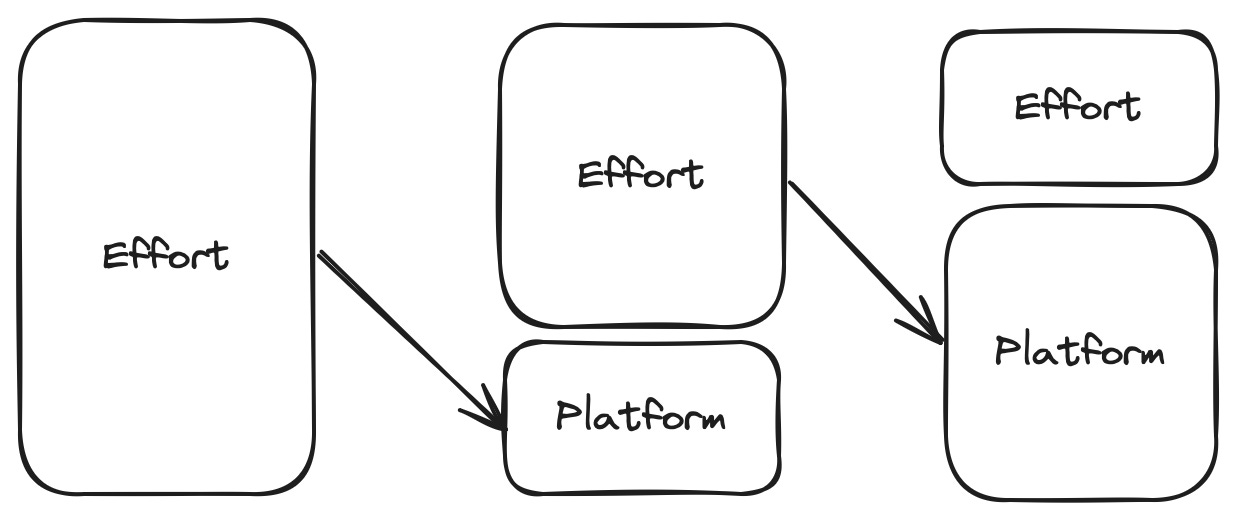I was obsessed with productivity.
I saw my life as a business process and tried to optimize every aspect as much as possible. Back in college, I studied Japanese while going for a run. I took showers while I cooked pasta. And I cut down on sleep to have more hours to read and study.
After my studies, I continued. I completed dozens of online courses and learned the basics of six languages.
Looking back at this, I felt like a hamster on a wheel.
I thought that putting a lot of work into a lot of ideas produces a lot of output.
But I was wrong.
I thought I was like a Ford car factory in 1910. Setting up a production line to produce as many cars or achievements as possible.
The only problem was that I had to set up this whole production line from scratch for everything I did. I did so many different things that I was always rushing to produce the output as fast as possible.
"A customer can have a car painted any color he wants as long as it's black." — Henry Ford.
Henry Ford excelled because he did only one thing, and he did it right.
Imagine he had to produce a completely different car or customize it based on customer needs. His whole production output would have plummeted radically.
Approach #1: The Vision
One solution to the problem would be to focus on one thing, on one big goal.
If you know you want to produce black cars, you can spend all your time setting up the production line and producing them.
I did this when I ran my first marathon at age 21.
I defined the clear goal of finishing below 3 hours and 40 minutes. Then, I identified the most suitable training plan for the last three months before the race. And I followed the training schedule like a Buddhist monk.
Not only that, but I also adapted my nutrition accordingly, so I lost some weight and didn't drink any alcohol.
The result was that I aced my first marathon and finished it in 3 hours 38 minutes 28 seconds.
However, in the case of the marathon, being successful is relatively easy.
Already, millions of other marathon runners have finished races successfully. There are tons of training plans available that can almost guarantee a particular finish time if you choose a realistic goal and are disciplined enough to stick to the training plan.
Success in something that hasn't been done before is entirely different. Its ingredients also require a clear vision. But that's not enough.
Approach #2: The Platform
Elon Musk has an ambitious vision for things that haven't been done before.
SpaceX's ultimate goal is to enable human life on multiple planets, focusing primarily on establishing a self-sustaining city on Mars.
NASA had launched individual rockets and spent millions to develop each. However, there was hardly any learning and reuse from one rocket launch to the next. Making no remarkable progress in the direction of such a bold vision, as stated by Elon Musk.
"Throwing away multimillion-dollar rocket stages after every flight makes no more sense than chucking away a 747 after every flight." — Elon Musk.
SpaceX changed this by making rockets reusable. Their components are standardized as much as possible. Existing rockets are reused, and new rocket models are built based on reusing components from earlier rocket models.
Therefore, SpaceX can build new rockets faster and cheaper, which increases the demand for its rocket missions. This, in turn, helps SpaceX become more profitable and finance new investments that will make progress toward its final goal.
Even if they fail with a rocket start, SpaceX sees each launch as an experiment and learns from it, making it easier next time.
Putting It Together
Platforms are incredibly useful if we think long-term, are clear about our goals, and go the extra mile to package our work into reusable components.
The word "platform" originates from the French word "plateforme" which means "flat form." This origin reflects the architectural sense of the word, which initially described a literal flat surface or ground plan.
A platform is like building a house: You need to build it floor by floor. Each floor must be structured, secured, and "flattened" before you can build the next floor on it.
Once you adopt this mindset, you can see platforms everywhere.
At the beginning of my studies, I read Tony Buzan's The Ultimate Book of Mind Maps and started using mindmaps for everything.
A mindmap is a visual tool that starts with a central idea, branching out into related subtopics using lines, keywords, colors, and images to organize and connect information effectively.
Although studying with mindmaps was fun, it felt incredibly slow. Usually, a few days before an exam, it seemed that I would hardly manage to go through all of the material, even once.
At the same time, many of my fellow students would have already read through it multiple times.
However, I covered the whole material bit by bit, branch by branch.
I carefully had to select which concepts were worth putting on the mindmap and which to leave out, as there is only limited space on a DIN A3 sheet. As mindmaps connect pieces of information with each branch, I added not only new information but also had to review what I had already learned and connect it with what was already there.
Therefore, what I captured with a mindmap, I hardly could forget.
As I documented the whole information on only a few DIN A3 sheets, I could review it in a very short amount of time the day before the exam or any time I needed to get back to it, making the exam itself feel effortless.
I could leverage my platform for learning consisting of mindmaps.
However, it is not only mindmaps that can be seen as a platform. There are platforms for so many other things:
Developing software with reusable modules.
Building a second brain by capturing and connecting notes.
Writing books based on already published articles (or the other way around).
We can only build platforms if we step back, develop a clear vision, and steadily progress by building reusable components.
In what other areas are you building a platform? Let me know in the comments.




